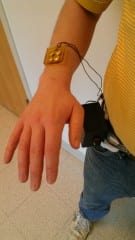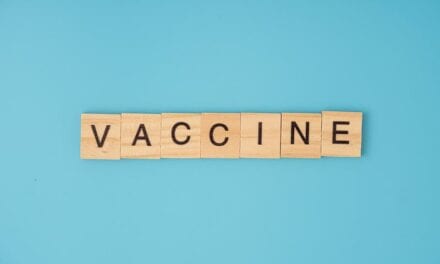Wound healing breakthrough: a novel ultrasound patch may heal venous ulcers.
If validated in future studies, the new patch could significantly accelerate tissue repair and reduce costs for chronic wound management.
The ultrasound patch weighs just 100 grams and is connected to two fully rechargeable lithium ion batteries. Patients could use the transducer in a home environment, while still wearing their compression socks. The applicator delivers low-frequency, low-intensity ultrasound directly to wounds.
Venous ulcers account for 80% of all chronic wounds found on lower extremities and affect approximately 500,000 US patients annually, a number that’s expected to increase as obesity rates climb.
Standard treatment involves controlling swelling, taking care of the wound by keeping it moist, preventing infection, and compression therapy. Despite these measures, wounds often take months and occasionally years to heal.
“Right now, we rely mostly on passive treatments,” explains study author Michael Weingarten, MD, chief of vascular surgery at Drexel Medicine in Philadelphia, in a news release. “With the exception of expensive skin grafting surgeries, there are very few technologies that actively stimulate healing of these ulcers.”
Enter the novel ultrasound patch.
In the small study, patients who received low-frequency, low-intensity ultrasound treatment during their weekly check-up in addition to standard compression therapy showed a net reduction in wound size after just four weeks (Fig. 3a,3b). By contrast, patients who didn’t receive ultrasound treatment had an average increase in wound size during the same time period (Fig. 2a,2b).
Previous research on ultrasound’s ability to heal ulcers was performed at much higher frequencies, around 1 to 3 megahertz (MHz), but turning it down to the range of 20 to 100 kilohertz (kHz) produces more profound changes.
Researchers treated patients with either 15 minutes of 20 kHz ultrasound, 45 minutes of 20 kHz ultrasound, 15 minutes of 100 kHz ultrasound, or 15 minutes of a sham (placebo) ultrasound. The group receiving 15 minutes of 20 kHz ultrasound showed the greatest improvement, with all five patients experiencing complete healing by the fourth treatment. More research is needed before the new patch is ready for prime time.
The findings are slated for publication in the Journal of the Acoustical Society of America.
The team’s clinical findings were corroborated by their in vitro studies in which mouse fibroblasts experienced on average a 32% increase in cell metabolism and a 40% increase in cell proliferation compared with control cells 24 hours after receiving 20 kHz ultrasound for 15 minutes.
The technology was developed by researchers at Drexel University, with funding from the National Institute of Biomedical Imaging and Bioengineering, part of the National Institutes of Health.





